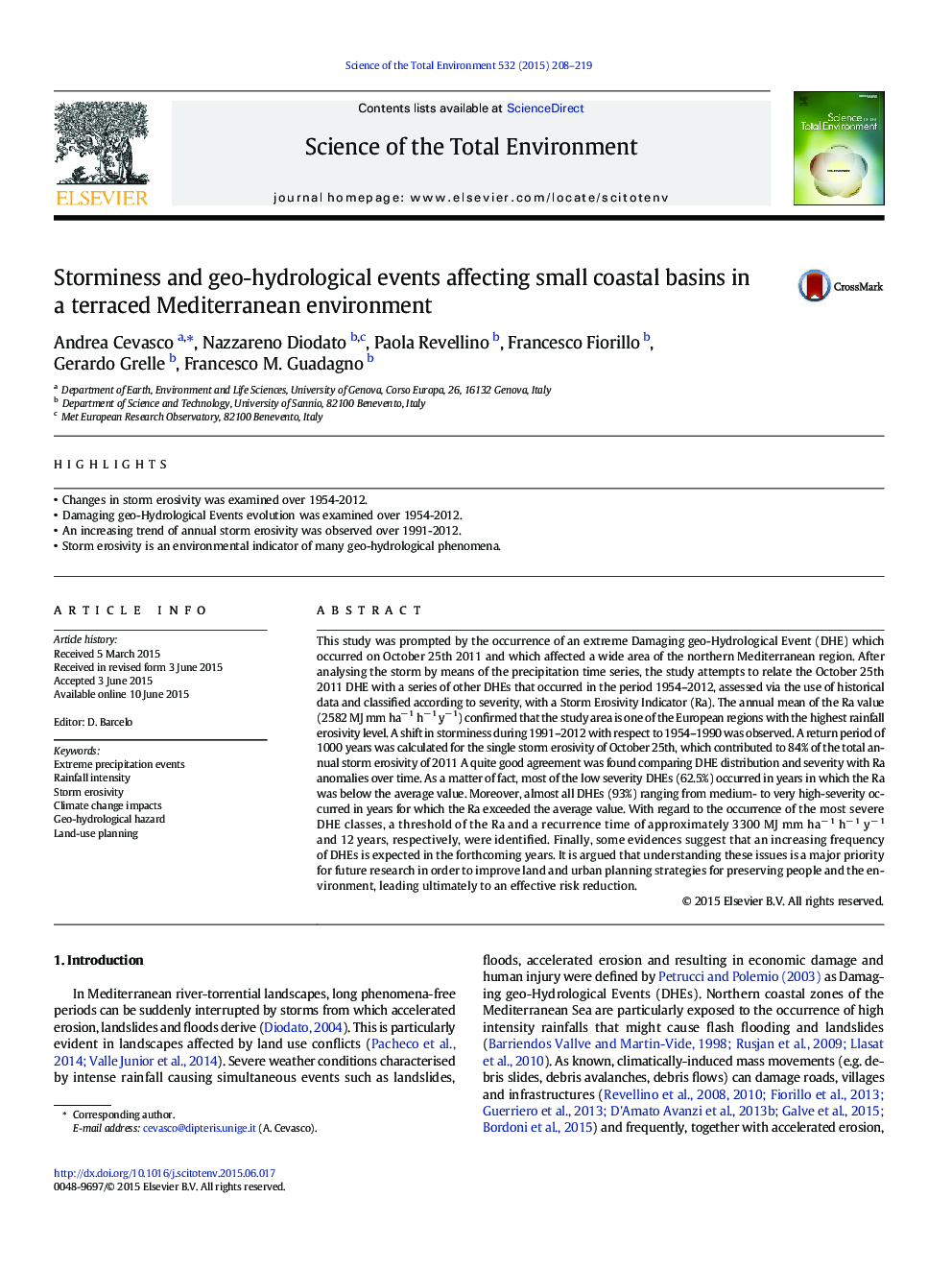| Article ID | Journal | Published Year | Pages | File Type |
|---|---|---|---|---|
| 6325706 | Science of The Total Environment | 2015 | 12 Pages |
â¢Changes in storm erosivity was examined over 1954-2012.â¢Damaging geo-Hydrological Events evolution was examined over 1954-2012.â¢An increasing trend of annual storm erosivity was observed over 1991-2012.â¢Storm erosivity is an environmental indicator of many geo-hydrological phenomena.
This study was prompted by the occurrence of an extreme Damaging geo-Hydrological Event (DHE) which occurred on October 25th 2011 and which affected a wide area of the northern Mediterranean region. After analysing the storm by means of the precipitation time series, the study attempts to relate the October 25th 2011 DHE with a series of other DHEs that occurred in the period 1954-2012, assessed via the use of historical data and classified according to severity, with a Storm Erosivity Indicator (Ra). The annual mean of the Ra value (2582 MJ mm haâ 1 hâ 1 yâ 1) confirmed that the study area is one of the European regions with the highest rainfall erosivity level. A shift in storminess during 1991-2012 with respect to 1954-1990 was observed. A return period of 1000 years was calculated for the single storm erosivity of October 25th, which contributed to 84% of the total annual storm erosivity of 2011 A quite good agreement was found comparing DHE distribution and severity with Ra anomalies over time. As a matter of fact, most of the low severity DHEs (62.5%) occurred in years in which the Ra was below the average value. Moreover, almost all DHEs (93%) ranging from medium- to very high-severity occurred in years for which the Ra exceeded the average value. With regard to the occurrence of the most severe DHE classes, a threshold of the Ra and a recurrence time of approximately 3300 MJ mm haâ 1 hâ 1 yâ 1 and 12 years, respectively, were identified. Finally, some evidences suggest that an increasing frequency of DHEs is expected in the forthcoming years. It is argued that understanding these issues is a major priority for future research in order to improve land and urban planning strategies for preserving people and the environment, leading ultimately to an effective risk reduction.
